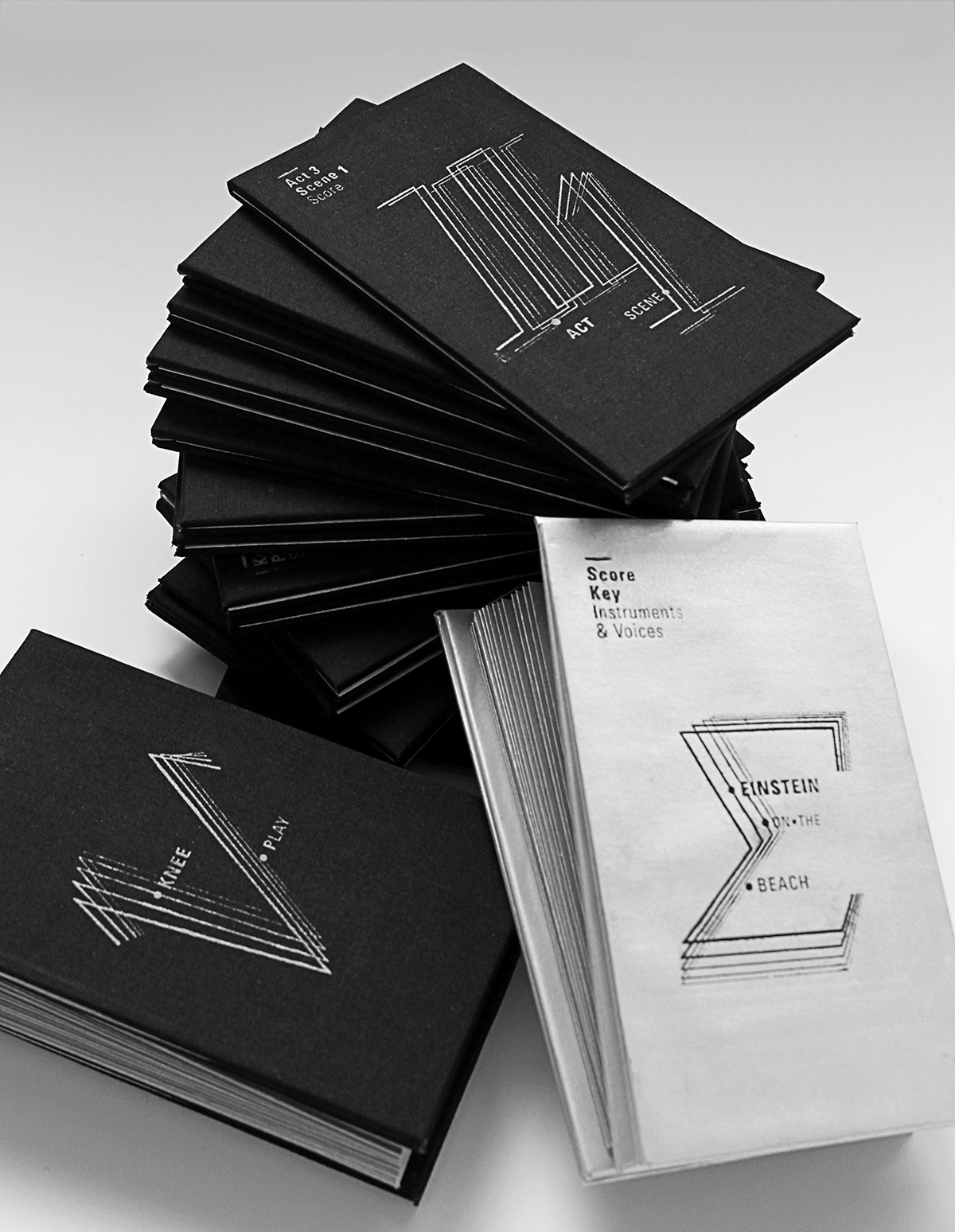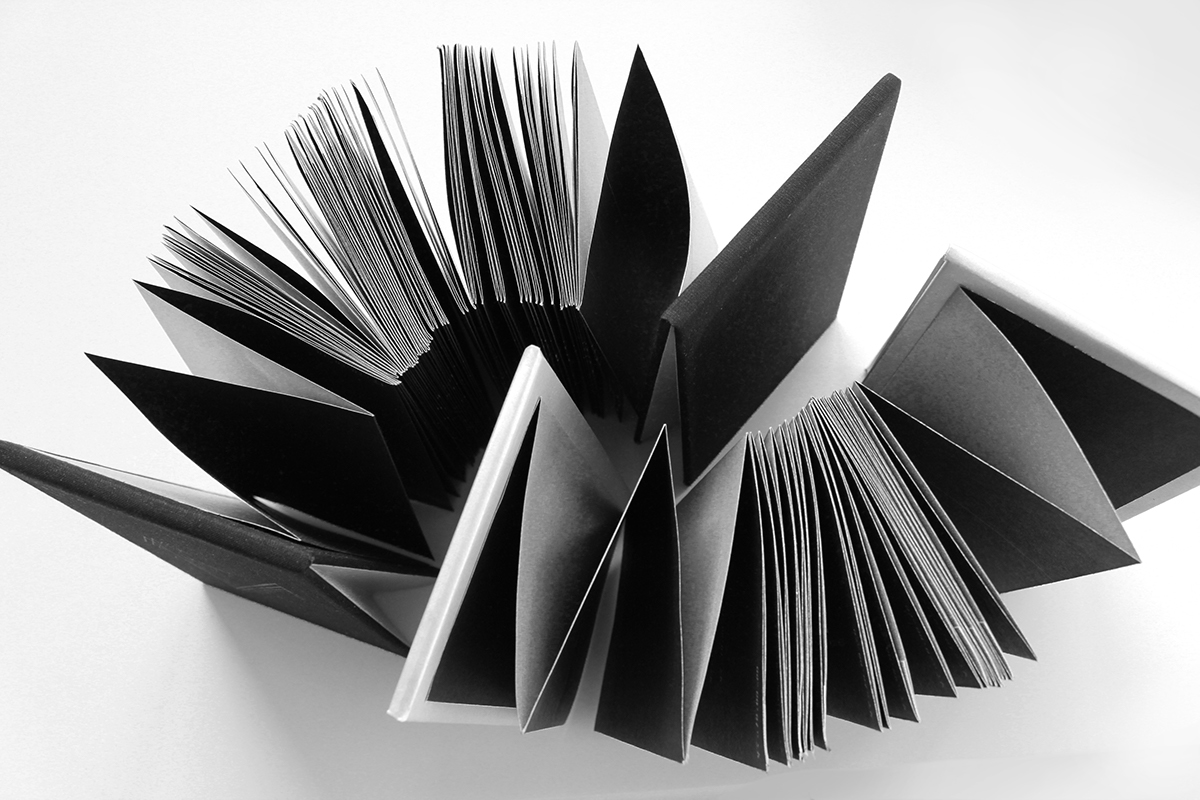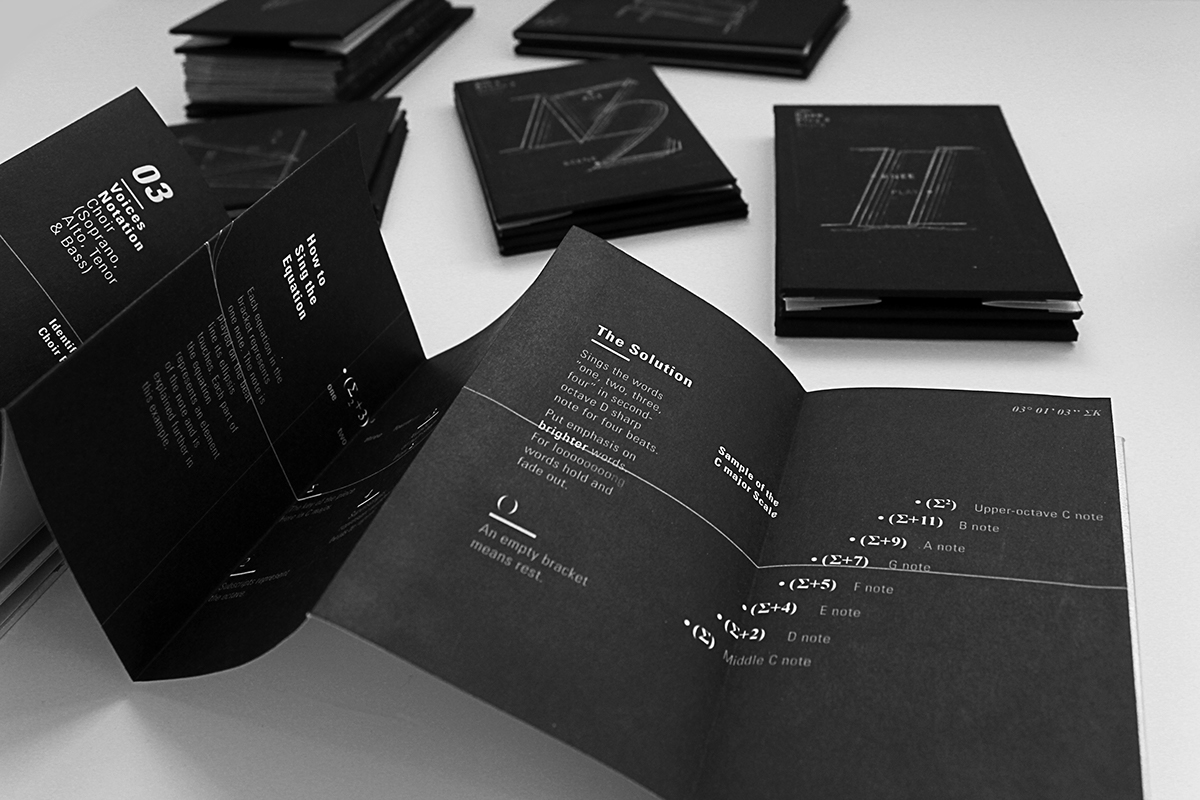Einstein On The Beach
Experimental Typographic Notation
Based on Einstein's success in the field of physics,
this peice of opera written by Philip Glass is notated using mathemathical equations
instead of the traditional music notation.
this peice of opera written by Philip Glass is notated using mathemathical equations
instead of the traditional music notation.
The piece is interpreted as a scientist’s pondering and dilemma of science’s contribution and
corruption during the nuclear apocalypse. The typographic notation solution is based on
mathematic equations and relativity. The opera’s repetitive, surreal and complicated sound is reflected
in the use of monochromatic colours, overlapping type and weaving lines.


The key explanation book and all 14 score books come in a solid black box.
A good balance of matte black and metallic materials help create a very technological and mechanical feel for the final product.
A good balance of matte black and metallic materials help create a very technological and mechanical feel for the final product.


Einstein on the Beach is a piece of modern opera composed by Phillip Glass in 1975. The piece is played out by
4 actors, 12 singers, a solo violinist and an ensemble of instruments. With a running time of 3 hours, the opera is separated into 4 acts,
totaling to 9 scenes with 5 short Knee Plays separating each act.
4 actors, 12 singers, a solo violinist and an ensemble of instruments. With a running time of 3 hours, the opera is separated into 4 acts,
totaling to 9 scenes with 5 short Knee Plays separating each act.

Each score book comes with a front and back cover that opens and turns into a stand to hold the score upright while the musician plays.
The score is revealed in a long, concertina form, accommodating to the continuous and long nature of Phillip Glass’ opera.
Although the piece is repetitive and patterns emerge, but it’s long run time requires a high level of focus and precision from the performers.
The score reflects this by carefully noting the entire opera without simplification.
The score is revealed in a long, concertina form, accommodating to the continuous and long nature of Phillip Glass’ opera.
Although the piece is repetitive and patterns emerge, but it’s long run time requires a high level of focus and precision from the performers.
The score reflects this by carefully noting the entire opera without simplification.

The key to reading and understanding the score is based around Einstein’s relativity theory.
The instruments and voices are all played in the key C major, hence E = major C, imitating Einstein’s mass-energy equivalent e=mc2.
The musicians would solve an equation written in either numbers, Roman numeric or Greek symbols relative to this key
to figure out the pitch they need to play.
The instruments and voices are all played in the key C major, hence E = major C, imitating Einstein’s mass-energy equivalent e=mc2.
The musicians would solve an equation written in either numbers, Roman numeric or Greek symbols relative to this key
to figure out the pitch they need to play.
Lines are used to represent the sonic dynamics of the piece, creating a visual equivalence of Einstein’s time-space theory.
Vertical lines indicate time while horizontal lines represents the amplitude and movement of the sounds.

Univers is chosen as the primary typeface because its rational and modern timeless neutrality compliments Times New Roman well to create
a scientific and serious look. With a total of 59 weights, Univers is useful for differentiating between multiple instruments
and voices but still reveal a sense of unity as a complete score. Times New Roman with its extensive set of mathematical glyphs
is chosen as the typeface for mathematical equations in the score to replicate the look and feel of scientific documents.
a scientific and serious look. With a total of 59 weights, Univers is useful for differentiating between multiple instruments
and voices but still reveal a sense of unity as a complete score. Times New Roman with its extensive set of mathematical glyphs
is chosen as the typeface for mathematical equations in the score to replicate the look and feel of scientific documents.

A double modular grid is used to layout the score. The modular grid is efficient for managing the vertical timelines as well as rows for multiple
instruments and voices. Its continuous manner also works well for the long music piece and the absence of page breaks.
Two grids are overlapped on each other with one for the instruments while the other for the actors’ script. As well as creating a dynamic graphic texture
that reflects the sound, the grids interact with each other so the notation and words don’t overlap to ensure legibility.
instruments and voices. Its continuous manner also works well for the long music piece and the absence of page breaks.
Two grids are overlapped on each other with one for the instruments while the other for the actors’ script. As well as creating a dynamic graphic texture
that reflects the sound, the grids interact with each other so the notation and words don’t overlap to ensure legibility.
The full score for Knee Play 5 in a sampler video.






